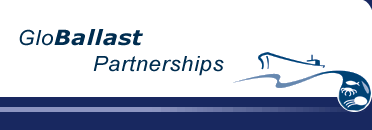| Administering Authority |
The Ministry of Fisheries administers the Import Health Standard. |
| Ports Affected |
All New Zealand ports. |
| Ships Affected |
All ships discharging ballast from other countries into New Zealand ports.
|
| Mode of Implementation |
Mandatory.
|
| Date Commenced |
Became mandatory in May 1998. |
 |
| Main requirements/provisions of
the legislation |
| Acceptable methods of BW Management |
- Exchange in areas free from coastal influence by emptying and refill or flow through of at least 3 times tank volume
- Or ballast is fresh water;
- Or ballast has been treated using an approved shipboard treatment (of which none exist yet);
- Or ballast is discharged in an approved area or onshore treatment facility (of which none exist yet).
|
| Target species specified |
None. |
| Uptake controls |
Water listed in Annex 1 is considered high risk and cannot be discharged even with permission of an inspector (i.e. no exemptions given for these areas). |
| BW sampling |
None yet. |
| Records required |
Reporting form for every voyage to New Zealand (similar to IMO Resolution A868 (20) form). |
| Alternatives management / treatment
procedures |
Under current Standard, treatment would need to be a treatment approved by Ministry of Fisheries. |
| Standards/criteria for ballast
water treatment |
None yet, case by case assessment would be carried out if any treatments applied for approval before Convention finalised. |
| Procedures for unacceptable ballast
water |
Vessel sends intentions form before arrival saying how it will treat any ballast water to be discharged in New Zealand. If vessel has not signalled that it will exchange or that it qualifies for exemption, it will not be given pre-arrival permission by the inspector, to discharge. Alternative management of ballast will be recommended such as moving ballast around from tank to tank in order to take on cargo. If need be vessels are sent out to 12 nm to exchange ballast water before discharging in port. |
| Other requirements / provisions |
No water may be discharged if loaded in high risk ports listed in annex 1 (currently Tasmania and Port Philip Bay, Australia).
The intentions form (Part 1) and the reporting form (Part 2) must be completed and signed. |
| Sediment reception facility/ies? |
|
| Enforcement arrangements / fines
/ penalties |
Providing incorrect information to an inspector is an ofence under the Biosecurity Act section 154(b). It carries a penalty of up to 12 months imprisonment and/or fine not exceeding New Zealand $15,000 or for corporations $75,000.
Failure to obey directions of an inspector is an offence under section 154(c). It carries a penalty for individuals of a fine up to $5000 or for corporations up to $15,000.
|
| Further information |
|




